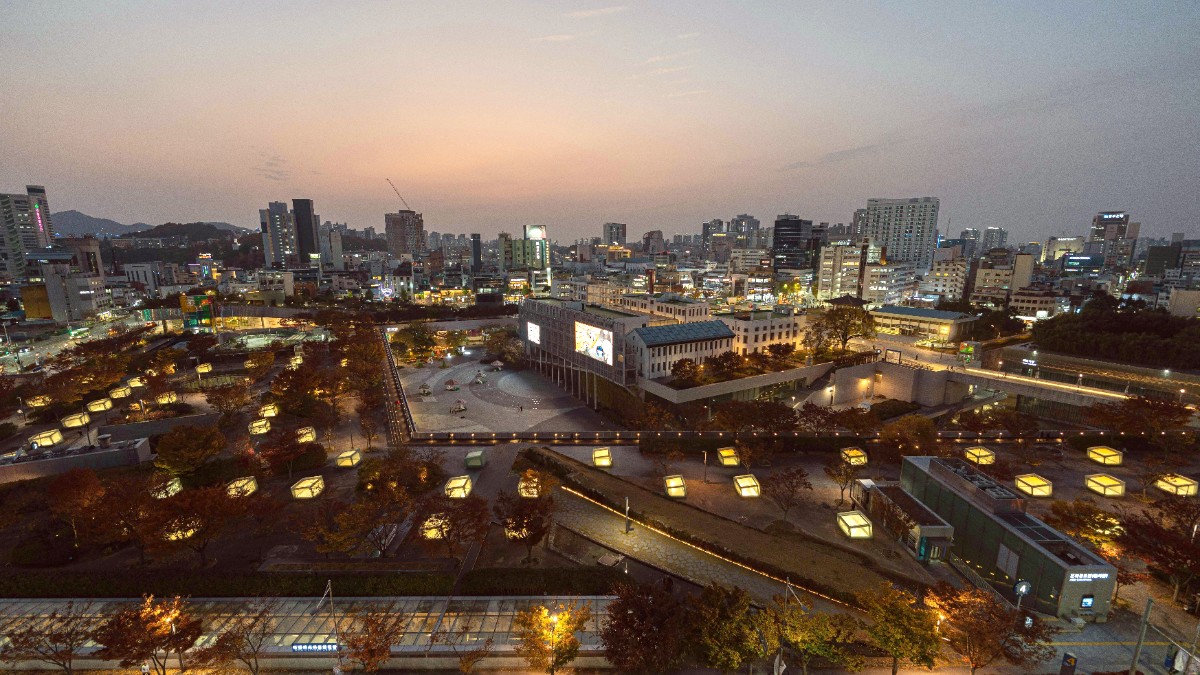
Jeollanam Do, South Korea
Gwangju holds several must-visit iconic landmarks, each with its own historical and cultural significance. These sites offer a direct connection to the city's unique narrative.
From its modern cultural hubs to solemn memorials, these places tell the story of Gwangju's past and present.
These sites collectively portray Gwangju's resilience and natural beauty.
A charming historical village with Western-style missionary houses and traditional Korean houses (hanok) from the late 19th/early 20th centuries.
Features renovated old buildings blending traditional architecture with contemporary cafes.
One of Gwangju's oldest temples on Mudeungsan slopes, dating back to the Silla Dynasty. A serene environment.
Part of the ACC complex, this was the civilian resistance headquarters during the 1980 Uprising. Preserved as a historical site.
May 18th National Cemetery and May 18th Democracy Square are memorial sites.
Gwangju's natural attractions provide a welcome escape from urban exploration, offering scenic views and outdoor activities.
The premier natural attraction. Offers diverse flora, fauna, unique rock formations (Jusangjeolli), and panoramic views. Trails cater to various fitness levels.
A large eco-park surrounding Gwangjuho Lake, featuring themed gardens, walking trails, and a botanical garden. Ideal for leisurely strolls and birdwatching.
Mainly an amusement park and zoo, it also includes extensive green spaces and a lake, providing open areas for recreation.
The largest lake in the Gwangju area, a scenic recreational spot and water source for the city. It forms the core of the Eco Park.
Flows directly through the city center, offering pleasant walking and cycling paths along its banks. A convenient urban green corridor.
Gwangju is inland. The nearest significant beaches are on the southwestern coast in Jeollanam-do (e.g., Yeonggwang, Sinan County), requiring a day trip.
Mudeungsan's Jusangjeolli (Seoseokdae, Ipseokdae) are spectacular geological features, unique hexagonal rock pillars formed by ancient volcanic activity. The Mudeungsan Jeonmangdae observation deck offers panoramic city views.
Wildlife viewing is mainly within Mudeungsan National Park, home to various birds, small mammals, and insects. Gwangju Family Land also has a zoo for structured animal viewing.
The unique columnar jointing of Mudeungsan (Seoseokdae, Ipseokdae) is its most famous geological feature. These formations, resulting from volcanic lava cooling, provide a dramatic and distinctive landscape.
Beyond the main attractions, Gwangju offers unique local experiences and off-the-beaten-path charm.
Planning your visits to Gwangju's attractions and booking tours can be simplified with these resources.
Consider booking in advance for popular tours, especially during peak season, to secure your spot and sometimes get better rates.
These platforms offer a wide array of tours, tickets, and activities for Gwangju and beyond.
Direct sources for detailed information and potentially unique local tours.
For a fulfilling experience on Gwangju's majestic Mudeungsan.
Maximize your visit with these practical tips.
Plan your sightseeing efficiently with these practical considerations.
Many areas are pedestrian-friendly, including Geumnamno, Chungjang-ro, Asia Culture Center, and Yangnim-dong Penguin Village. Dedicated bicycle paths along Gwangjucheon Stream are suitable for cycling.
Major attractions and museums typically have English information. Using translation apps like Papago can assist with communication in smaller establishments or with locals.
Naver Map or Kakao Map are essential for real-time bus and subway information, walking directions, and planning your routes effectively across the city.
Most major attractions are accessible via Gwangju Metro (Line 1) or the extensive bus network. A T-Money card makes transfers seamless and payments simple.
Naver Map for routesThe Gwangju City Tour Bus provides an organized way to visit multiple highlights without navigating public transport individually.
Official Gwangju Tourism siteLocal tourism offices may offer or recommend guided walking tours, especially for historical sites connected to the May 18th Uprising.
Find tours on GetYourGuideGwangju's U-Bike public bicycle sharing is suitable for exploring parks and designated paths. Private rentals are available near Mudeungsan.
Safety gearAutumn brings foliage to Mudeungsan, while spring offers comfortable temperatures for walking tours.
Gwangju's public transport and attractions strive for accessibility.
General safety and respectful conduct are important.
For unique local art and artisan crafts, visit Gwangju Art Street for souvenirs.
Gwangju serves as an excellent base for exploring the wider Jeollanam-do region.
Explore the natural beauty and cultural heritage of nearby areas.
Discover less-traveled areas with unique charms.
Options for reaching regional destinations from Gwangju.
Always check schedules and booking options in advance, especially for popular routes or during holidays.
The Jeolla region is a culinary powerhouse; expand your gastronomic journey.
Each city and town in Jeollanam-do often has its own unique local food pride.
Deepen your understanding of Korean culture in surrounding areas.
These regional experiences complement your Gwangju visit.
GetYourGuide: Explore and book a wide array of activities and tours for Gwangju and the surrounding Jeollanam-do region, from culinary adventures to historical excursions.
Search GetYourGuide for day trips from Gwangju to popular destinations like Damyang or Boseong to simplify your travel planning.
Discover unique cultural workshops or hands-on experiences by filtering options on GetYourGuide or checking with local tourism offices for authentic engagement.